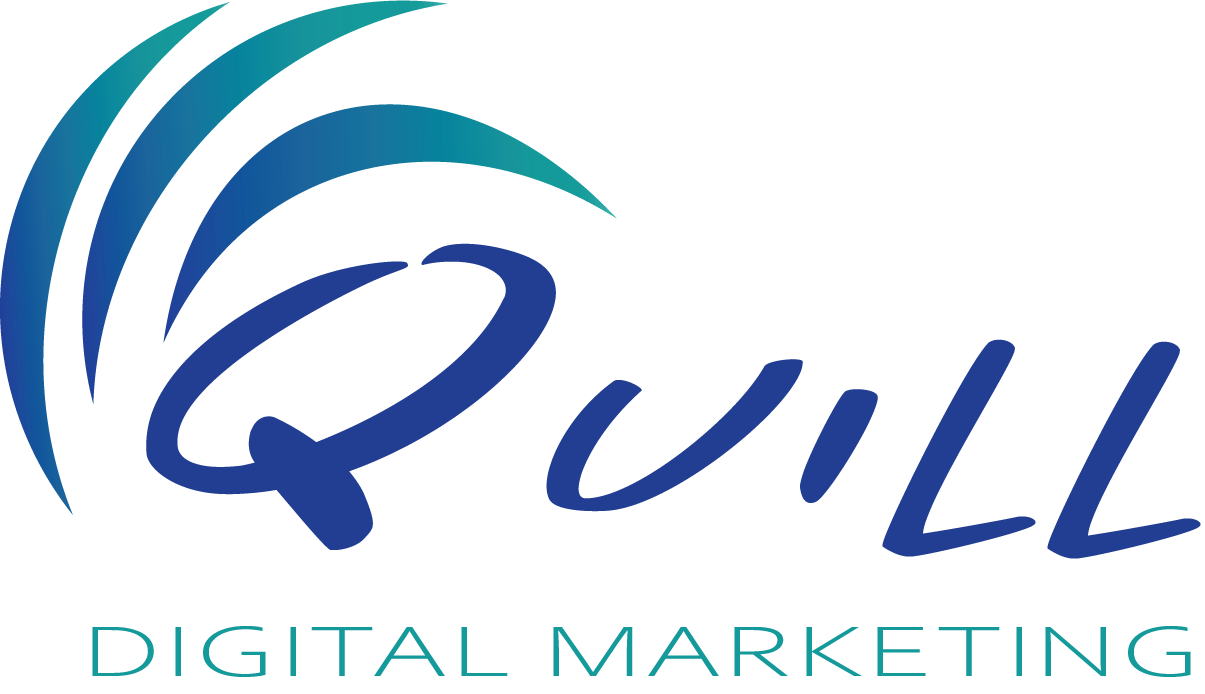
How to Use ROI to Make Better Marketing Decisions
Please welcome Guest Blogger Gary A Sanchez to Quill’s Blog. Gary’s blog deals with Google Adwords.
 Hi, my name is Gary Sanchez. My closest friends call me Cheese. I’ve been building sales and profits for businesses for many years as a marketing manager and director. I recently moved to Albuquerque and I’m now a freelance marketing consultant who helps retailers and restaurants grow traffic, sales and profits. My vocabulary doesn’t include the word “manana.” Why wait until tomorrow to get stuff done?
Hi, my name is Gary Sanchez. My closest friends call me Cheese. I’ve been building sales and profits for businesses for many years as a marketing manager and director. I recently moved to Albuquerque and I’m now a freelance marketing consultant who helps retailers and restaurants grow traffic, sales and profits. My vocabulary doesn’t include the word “manana.” Why wait until tomorrow to get stuff done?
I believe differentiation is the most important task a brand and business can accomplish. Sign up to receive my Audacious Monthly report where I highlight people and businesses that do differentiation well.
How to Use ROI to Make Better Marketing Decisions
My favorite business thinker is Peter Drucker. Professor Drucker is quoted as saying “the purpose of a business is to create and keep a customer.”
I prefer to modify his statement to say “the purpose of a business is to create and keep a PROFITABLE customer.”

Why are profits important? A business that is not profitable cannot survive: according to GAAP (“Generally Accepted Accounting Principles”), net profits are defined as the difference between sales revenue and total costs. If a business does not earn more money than it spends, it will either be forced to go out of business as it fails to be able to pay its expenses or it will be forced to borrow money. Unfortunately, without profits and positive cash flow, any company that has to borrow money to pay for basic expenses is unlikely to survive for long.
If you’re the head of a marketing department (or a marketing consultant) – management/ownership often wants proof that your marketing spending is contributing to real business results. This can be especially true in this day and age when social media marketing agencies and consultants continue to sell you on their ability to help you get more engagement, more fans and followers and even more website traffic.
Heck, if you’re an old school marketer like me, then you may remember the days when your ad agency tried to sell you on the benefits of increasing brand awareness. Look, if you can’t estimate or quantify the financial benefit of these measures, then you’re buying snake oil.
Profits can be measured at any point in time and across any time periods. Most often, companies (especially publically traded companies) are evaluated by outsiders based on their quarterly or annual profits. While over time, profits are critical to sustaining a business’ operations, there are times when companies are willing to make decisions that are unprofitable:
There are such things as unprofitable customers, unprofitable products and unprofitable tactics. Two classic examples of seemingly unprofitable but likely strategic and beneficial activities are:
- A grocery store selling household staples such as milk and eggs at rock bottom prices – these are called “loss leaders” and are usually rationalized as investments in customer acquisition and the decision-makers assume that once you get the customer into the store, they will buy enough other profitable products to overcome the losses/investment;
- Sampling – giving away (usually) small versions of your product or service to let people “try before they buy.” This works really well with food products, but it also works really well with service businesses who create and give away informational lead magnets.

In both cases, the anticipated and desired outcome is ultimately still more profits. The benefits to a grocery store of selling commonly purchased products as a loss leader are to sell other items that offset the lost income from lowering the prices of those loss leaders. The benefits a service company would realize from giving away a report or information resource is to obtain the reader’s contact information (e.g., name + email address or phone number) to allow for follow up marketing. Companies assume that some percentage of people who give you their contact information will eventually buy from you (and that the revenue from those sales is greater than the costs of creating and sharing the information.
If the goal is to acquire profitable customers (as Peter Drucker asserts), I believe you would be better served by being able to forecast which customers will become profitable versus looking back to determine which customers have been profitable. Instead of net income (which aggregates past performance) being the tool you use, you instead need a predictive measure. If you are a marketing leader, you probably have experience using ROI to predict and to evaluate the costs and benefits of a proposed marketing program.
These days, one of the buzz words thrown around quite a bit is marketing ROI. It’s hard to have a marketing conversation without hearing “ROI-this” and “ROI-that.”
How do you measure/define ROI?
[NOTE: Because we’re making a prediction, you need to take the forecasted values of each of these measures]
ROI = Net Profit / Total Investment * 100 =
(Net Benefit – Net Cost) / Net Cost * 100
An Example
For example, let’s say two members of your marketing department have competing projects they are advocating for. The first project is to invest in sales training for your sales reps on the floor of each of your 100 retail stores. The second project is to invest in the development of web content that will be distributed from the company’s website. In both of these cases, the costs are very easy to estimate:
OPTION 1: SALES TRAINING |
OPTION 2: WEBSITE CONTENT |
|||
| ACTIVITY | COST | ACTIVITY | COST | |
| training fixed cost | Hire training company $50,000 |
software fixed cost |
Hire content company
$5,000 |
|
| Training cost per employee | $500 |
cost per blog post |
$500 | |
| # employees trained | 200 | # blog posts per week | 1 | |
| Training variable cost | $100,000 | # weeks of blogging | 50 | |
| Content Development Variable Costs | $25,000 | |||
| TOTAL Training Costs | $150,000 | TOTAL Content Costs | $30,000 | |
| TOTAL Sales Increase | $200,000 | TOTAL Sales Increase | $40,000 | |
| ROI Formula | (200-150)/150 | ROI Formula | (40-30)/30 | |
| ROI | 33% | ROI | 33% | |
Challenges with Marketing ROI
So which project would you prefer to invest in? Both offer a 33% ROI. Some additional factors may help you decide:
- What’s the net profit effect of each investment?
– Option 1 delivers $50,000 net profit while option 2 delivers $10,000.
- What if I told you the time horizon for both calculations was 1 year?
– What would happen to the calculations should you move the time horizon to 2 years?
– What if you learned that the turnover of the sales team is 50% per year?
– What if you learned that part of the sales training includes building an email list of customers that purchase and that this allows the company to make a second sale about 12 months after the initial sale?
- What if the stated goal of the marketing team was to build the company’s brand to be known as the single most authoritative brand in the industry?
– Does an investment in educational content for the consumer in option 2 make you want to overlook the differences in net profits each project delivers?
- What if the stated goal of the marketing team is to “optimize brand awareness and consumer engagement”?
Instead of thinking about ROI as an answer, I recommend you think of it in terms of analysis.
Because no two investment opportunities are alike, getting all of the decision-makers into a room to discuss and evaluate what the real costs and benefits of each investment opportunity are can be a valuable exercise. By digging into the numbers more deeply than just accepting one project has a 120% ROI and the other has a 110% ROI, you could very well improve your decision making by peeling back the onion and reviewing and checking each and every assumption within the original ROI estimate.
In an ideal world, you will have a long list of investment projects you have considered and have even reviewed performance to validate the accuracy of the ROI estimates. Theoretically, now you could know which activities you could select are likely to have the greatest positive effects on your business. Pareto called these the “vital few,” the 20% of activities and investments that return 80% or more of the greatest results.
Other Challenges with Marketing ROI
- Can you easily forecast benefits and costs? If your marketing efforts are geared towards increasing leads to hand off to your sales force, then you will need to estimate the dollar value of those leads;
- Can you accurately forecast benefits and costs? What’s the expected value of your prediction? Nowhere in an ROI measure is there any assessment of what the probability of the assumed benefits and costs are. If you forecast poorly, you could easily calculate a useless ROI figure.
- Can you connect the dots between an input and an output? What IF your marketing director is convinced that growing Facebook “Likes” is worth an additional $50,000 in sales in the next 6 months? How could she validate that assumption?
- Unwillingness to make data-driven decisions: Sometimes, the aforementioned marketing director feels more comfortable going with her gut, sleight of hand or with bad analogies to make decisions, in which case, ROI probably won’t be used to help you make better marketing decisions.
At Quill Digital Marketing, we are website and digital marketing experts, so you don’t have to be. We make sure that your business Website or Digital Marketing is up to date, monitored, maintained, and cutting edge, without a second thought from you. We make your business work better. And it all starts with a conversation.

